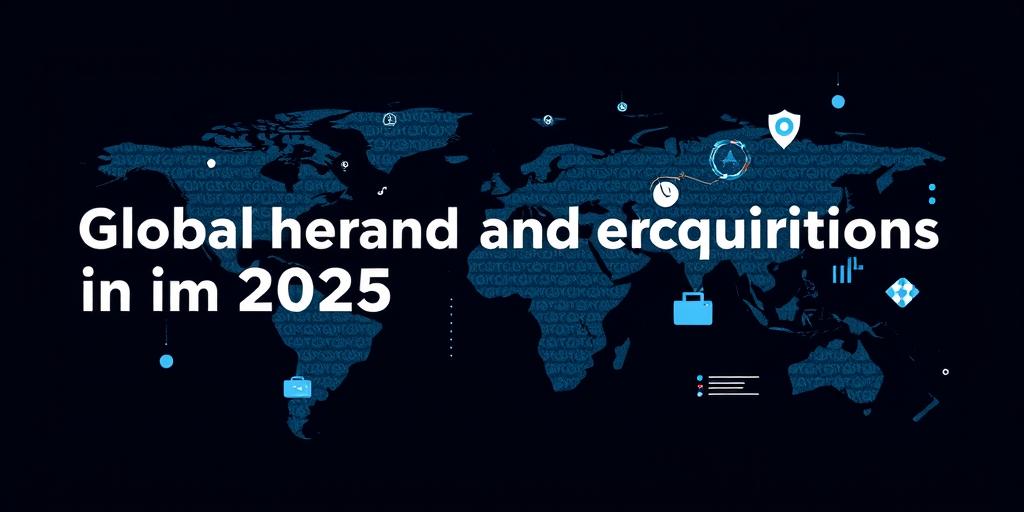M&A Trends in the Global Market: 2025 Insights
The global mergers and acquisitions (M&A) landscape is constantly evolving, influenced by factors such as economic shifts, technological advancements, and regulatory changes. As we look ahead to 2025, several key trends are expected to shape the M&A environment. This article provides an in-depth analysis of these trends, offering insights for businesses and investors navigating this dynamic market.
1. Technology as a Primary Driver
Technology will continue to be a major catalyst for M&A activity. Companies are increasingly seeking to acquire innovative technologies to enhance their competitive advantage, drive digital transformation, and expand into new markets. Key areas of focus include:
- Artificial Intelligence (AI): Companies are acquiring AI startups to integrate AI capabilities into their products and services.
- Cloud Computing: The demand for cloud-based solutions is driving acquisitions of cloud service providers and related technology firms.
- Cybersecurity: With the growing threat of cyberattacks, companies are investing in cybersecurity firms to bolster their defenses.
2. Cross-Border M&A Resurgence
Despite geopolitical uncertainties, cross-border M&A activity is expected to rebound as companies seek growth opportunities in international markets. Emerging markets, in particular, are attracting significant interest from global investors. Factors driving this trend include:
- Access to New Markets: Companies are using M&A to enter or expand their presence in high-growth markets.
- Diversification: Cross-border acquisitions help companies diversify their revenue streams and reduce their reliance on domestic markets.
- Cost Synergies: Companies are seeking to achieve cost savings by combining operations across different geographies.
3. ESG Considerations
Environmental, Social, and Governance (ESG) factors are playing an increasingly important role in M&A decisions. Investors are scrutinizing companies’ ESG performance, and deals that align with ESG principles are gaining favor. Key considerations include:
- Sustainability: Companies are acquiring businesses with sustainable practices to enhance their ESG credentials.
- Social Impact: Deals that promote social responsibility and community engagement are viewed positively.
- Governance: Strong corporate governance practices are essential for attracting investors and ensuring long-term value creation.
4. Private Equity Involvement
Private equity (PE) firms remain active players in the M&A market, driven by ample dry powder and the desire to generate returns for their investors. PE firms are increasingly focusing on:
- Platform Investments: Building larger companies through a series of strategic acquisitions.
- Operational Improvements: Enhancing the performance of portfolio companies through operational efficiencies and cost reductions.
- Exit Strategies: Preparing portfolio companies for sale to strategic buyers or through initial public offerings (IPOs).
5. Regulatory Scrutiny
Regulatory scrutiny of M&A deals is intensifying, particularly in sectors deemed critical to national security or competition. Companies must navigate complex regulatory landscapes and address potential antitrust concerns. Key areas of focus include:
- Antitrust Reviews: Regulators are closely examining deals to ensure they do not harm competition or consumer welfare.
- National Security Reviews: Governments are scrutinizing deals that involve foreign buyers to protect national security interests.
- Data Privacy: Data privacy regulations are impacting M&A transactions, particularly in the technology and healthcare sectors.
Conclusion
The M&A market in 2025 will be shaped by technology, globalization, ESG considerations, private equity, and regulatory scrutiny. Companies that understand these trends and adapt their strategies accordingly will be best positioned to succeed in this dynamic environment. By staying informed and proactive, businesses can capitalize on opportunities and mitigate risks in the global M&A landscape.
